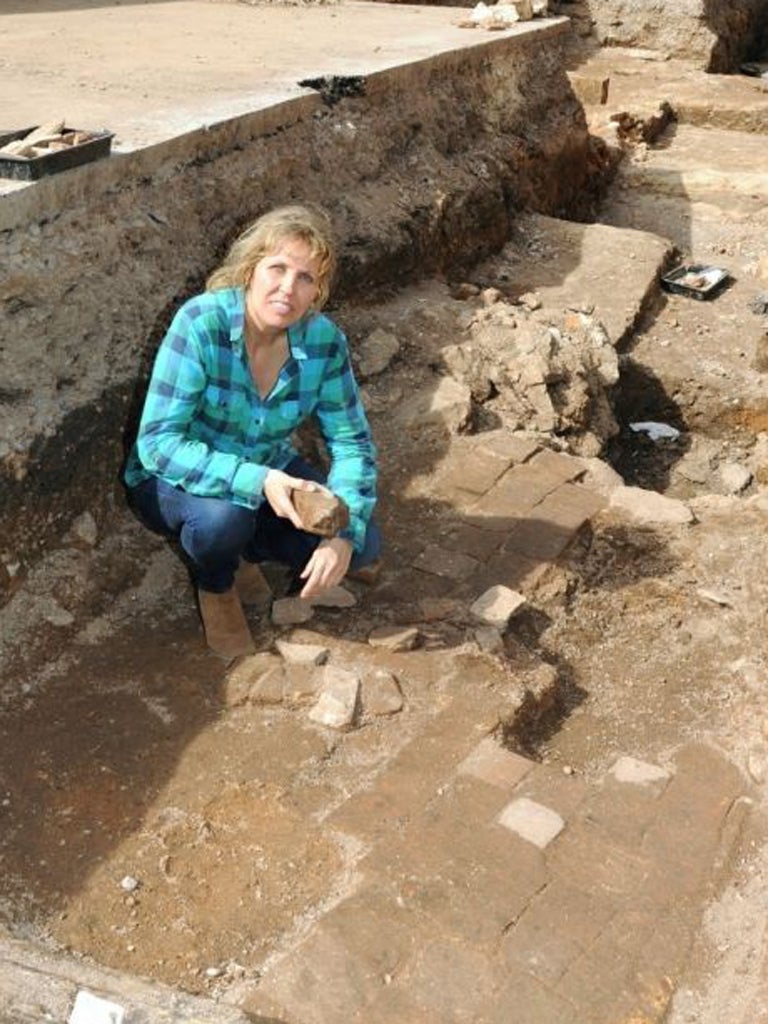Garden unearthed in Leicester Richard III dig

An archaeological dig searching for the grave of Richard III has uncovered evidence of a lost garden, organisers said.
Experts from the University of Leicester who are leading the search discovered paving stones which they believe belong to the garden of Robert Herrick where, historically, it is recorded there was a memorial to Richard III.
Work by the "time tomb team", as they have become known, has so far involved the digging of two trenches at a Leicester city centre car park - and this week a third was excavated - thought to cover the site of a Franciscan friar where the former king is believed to have been buried in 1485.
Working alongside members of the Richard III Society, archaeologists also confirmed they had found the church of the Grey Friars.
Research at the site, which is owned by Leicester City Council, began on August 24 with archaeologists using ground-penetrating radar equipment to mark out the trenches.
Philippa Langley, of the Richard III Society, said: "This is an astonishing discovery and a huge step forward in the search for King Richard's grave.
"Herrick is incredibly important in the story of Richard's grave and in potentially helping us get that little bit closer to locating it."
In the early 1600s, Alderman Robert Herrick, a mayor of Leicester, bought the land of the Grey Friars and built a large mansion house with a garden on the site.
In 1612, Christopher Wren, father of the famous architect, was visiting Herrick and recorded seeing a handsome three foot stone pillar in Herrick's garden.
Inscribed on the pillar was: "Here lies the body of Richard III sometime King of England."
This is the last known record of the site of King Richard's grave. Richard is historically recorded as being buried in the choir of the Church of Grey Friars.
Thereafter, in 1711, Herrick's descendants sold the mansion house and garden.
After passing through various owners the mansion house was eventually pulled down sometime in the 1870s and the municipal buildings were built.
However, Herrick's garden seems to have remained a garden, or wasteland, up until the 1930s to 1940s when it was paved over to become a car park.
Mrs Langley added: "The discovery of Herrick's garden is a major step forward and I'm incredibly excited.
"In locating what looks like one of the garden's pathways and, potentially, its central area which could have once held the three foot stone pillar marking the location of King Richard's grave, we could be that bit closer to finding the resting place of Britain's last warrior king."
The dig is being filmed for a Channel 4 documentary to be aired later this year.
PA
Subscribe to Independent Premium to bookmark this article
Want to bookmark your favourite articles and stories to read or reference later? Start your Independent Premium subscription today.

Join our commenting forum
Join thought-provoking conversations, follow other Independent readers and see their replies